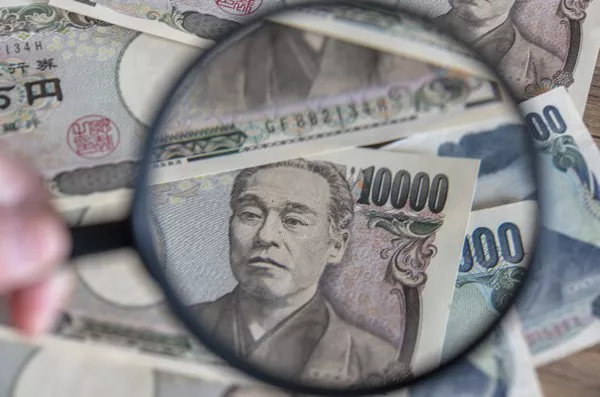The world of currency is often shrouded in intrigue, with each nation boasting its own unique denominations and designs. In Japan, the yen reigns supreme as the official currency, recognized for its intricate banknotes and historical significance. Among the various denominations, one particular question piques curiosity: Is there a 1 yen note? In this comprehensive exploration, we delve into the fascinating realm of Japanese currency to uncover the truth behind this elusive denomination.
Japanese Currency
Before addressing the existence of a 1 yen note, it’s crucial to establish a foundational understanding of Japanese currency. The yen (JPY) serves as Japan’s official currency, denoted by the symbol “¥.” Introduced during the Meiji Restoration in 1871, the yen replaced the previous feudal currency system, marking a pivotal moment in Japan’s modernization efforts.
Japanese currency is subdivided into smaller units, including coins (referred to as “yen”) and banknotes (known as “sen” and “en” respectively). While coins are commonly used for everyday transactions, banknotes play a vital role in larger purchases and financial transactions. Currently, there are six denominations of yen banknotes in circulation, ranging from ¥1,000 to ¥10,000, each featuring unique designs and historical figures.
Exploring Yen Banknotes
Yen banknotes serve as tangible representations of Japan’s rich history, culture, and technological advancements. From iconic landmarks to renowned historical figures, each note encapsulates a piece of Japan’s identity. Let’s take a closer look at the various denominations of yen banknotes:
¥1,000 Note: Featuring a portrait of Hideyo Noguchi, a prominent bacteriologist, and adorned with cherry blossoms, the ¥1,000 note celebrates Japan’s scientific achievements and natural beauty. Despite being the smallest denomination of yen banknotes, the ¥1,000 note holds significant cultural and historical significance.
¥2,000 Note: Unlike other denominations, the ¥2,000 note is relatively rare and not commonly circulated. Introduced in 2000 to commemorate the millennium, this note features a scene from the classic Japanese novel “The Tale of Genji” and a depiction of Shureimon, a famous gate in Okinawa.
¥5,000 Note: The ¥5,000 note pays homage to Ichiyo Higuchi, a pioneering female author, and features wisteria flowers, symbolizing her contributions to Japanese literature. Despite its moderate value, the ¥5,000 note holds cultural significance as a tribute to Higuchi’s groundbreaking work.
¥10,000 Note: As the highest denomination of yen banknotes, the ¥10,000 note features a portrait of Yukichi Fukuzawa, a renowned educator, and founder of Keio University. Adorned with a phoenix, symbolizing renewal and prosperity, the ¥10,000 note reflects Japan’s commitment to education and intellectual advancement.
The Mystery of the 1 Yen Note
Amidst the array of yen banknotes, the absence of a 1 yen note raises intriguing questions. Unlike other denominations, there is no physical 1 yen banknote in circulation. Instead, the 1 yen denomination is represented solely by coins, commonly referred to as “1 yen coins.
Historical Context: The absence of a 1 yen note can be traced back to historical developments in Japan’s currency system. During the Meiji era, Japan underwent rapid modernization and sought to streamline its monetary infrastructure. As a result, the decision was made to introduce coins for smaller denominations, including 1 yen, 5 yen, and 10 yen, while reserving banknotes for larger denominations.
Practical Considerations: From a practical standpoint, the production and circulation of a 1 yen note may not be economically viable. Given its minimal value, the cost of producing and maintaining a 1 yen note could outweigh its utility in everyday transactions. By utilizing coins for smaller denominations, Japan’s monetary authorities were able to optimize efficiency and minimize expenses.
Cultural Significance: Despite the absence of a 1 yen note, the 1 yen coin holds its own cultural significance within Japanese society. In Japan, the number 1 is often associated with luck, prosperity, and new beginnings. As such, the 1 yen coin symbolizes good fortune and serves as a token of auspiciousness in various cultural practices and traditions.
Practicality in Everyday Transactions
While the absence of a 1 yen note may seem peculiar to outsiders, it is widely accepted and integrated into Japan’s everyday transactions. The 1 yen coin, along with other coin denominations, plays a crucial role in facilitating small purchases, calculating exact change, and maintaining efficiency in commerce.
Convenience Stores: In Japan, convenience stores (known as “konbini”) are ubiquitous and cater to a wide range of consumer needs. From snacks and drinks to household essentials, convenience stores rely on the convenience and practicality of coins, including 1 yen coins, for quick and efficient transactions.
Vending Machines: Vending machines are another prominent feature of Japan’s urban landscape, offering a diverse selection of beverages, snacks, and other goods. To accommodate a wide range of prices, vending machines accept various coin denominations, including 1 yen coins, allowing customers to make precise purchases without the need for exact change.
Cultural Practices: Beyond its practical utility, the 1 yen coin holds cultural significance in Japanese society. In traditional rituals and customs, such as tossing coins into temple offering boxes or playing traditional games like “fukuwarai” (a New Year’s game involving blindfolded participants), the 1 yen coin symbolizes blessings, good fortune, and prosperity.
Conclusion
In conclusion, the absence of a 1 yen note in Japan’s currency system is not merely a quirk of design but a result of practical considerations and historical developments. While other denominations feature prominently in yen banknotes, the 1 yen coin plays a vital role in facilitating everyday transactions and cultural practices. Despite its minimal value, the 1 yen coin holds its own significance as a symbol of luck, prosperity, and tradition within Japanese society. As such, the mystery surrounding the 1 yen note serves as a testament to the intricacies and nuances of Japan’s monetary landscape.


